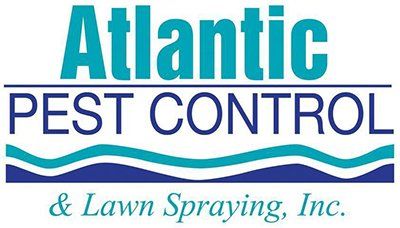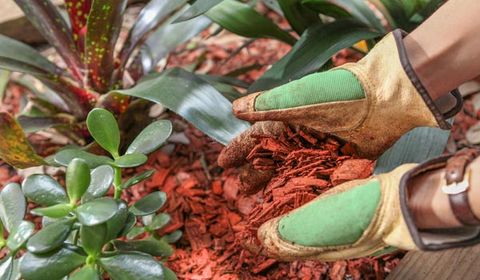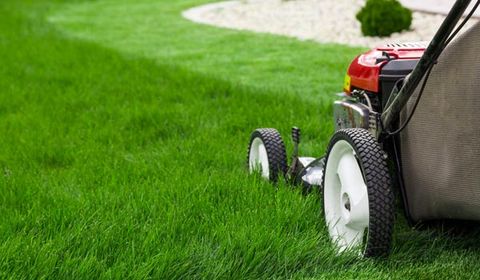Care For Your Lawn
Information on Caring for your Lawn
Practice these tips to reduce environmental strain on your lawn:
- Moderate nitrogen fertility, mow at proper heights, and irrigate when the grass needs water.
- In shaded situations, do the following:
- Increase the mowing height, reduce fertilizer applications, and reduce water use considerably.
- Avoid the effects of foot traffic, monitor for weed and disease pressure, and consider other ground covers.
Irrigation
Need For Irrigation
Use these following visual signs to determine the need for irrigation:
- Grass has a dull, bluish-gray coloring, and foot tracks remain in the grass.
- Leaf blades are folded in half on at least a third of the site.
- Soil samples from the root zone are arid and crumbly.
- Indicator landscape plants (such as impatiens and azaleas) have drooping leaves.
Irrigation System Design
- The application rate must not exceed the soils ability to absorb and retain the water applied during any one application.
- The design operating pressure must not be greater than the available source pressure, account for peak use times and supply line pressures at final build out for the whole system.
- Distribution devices and pipes should be designed for optimum uniform coverage. The first and last distribution device should have no more than a 10 percent difference in flow rate. This usually corresponds to about a 20 percent difference n pressure.
Lawn Spraying
- Protect your lawn and ornamentals from harmful insects such as chinch bugs, sod web worms and fire ants as well as disease.
- Use a service that provides a thorough treatment for protection against harmful insects and diseases.
Mulching
- Apply mulch deeply enough (2-3 inches after settling) to subdue weeds.
- Use mulches made from recycled materials (renewable sources), don't pile mulch against a tree, and leave a clear space for air to reach the trunk.
MOWING
- Pick up all stones, sticks, and other debris before mowing to avoid damaging the mower or hurting someone with flying objects.
- Mow only when the turf is arid, and avoid mowing wet turf with a rotary mower because clippings clog the machine.
- Sharpen the mower blade often enough to hinder an unkempt appearance to the turf.
- Use the highest proper mowing height for the grasses growing, and avoid removing more than a third of the foliage at one time.
- Mow in a different direction each time the lawn is cut, and adjust the cutting height by setting the mower on the driveway or sidewalk by using a ruler to measure the distance between the ground and the blade.
- Don't remove clippings; if clumping occurs, distribute the clippings by re-mowing or by lightly raking. You may also use a leaf blower to distribute clippings.
- Check your mower every time it is used and be sure to follow the manufacturer's instructions for service and adjustments.
- Always wear heavy leather shoes when mowing a lawn, and never fill a hot mower with gasoline.
- Wash the mower after use to depress rusting and weed seed movement.
- Practice grass recycling, return nutrients to the soil, compost if you collect clippings, and use the compost as a soil modifier or mulch.
- Don't place clippings into bodies of water or onto impervious surfaces, and sweep or blow back onto the lawn the clipping that are blown onto sidewalks or driveways.
- When using mowers, string trimmers, edger's, and other equipment, avoid mechanical damage to trees and shrubs.
Plant Disposal
- Don't sweep or blow debris into a storm drain, and be careful with yard waste because careless disposal may spread invasion of non-native plants!
- To curtail the chance of accidental propagation, prune plants before fruit is mature, and leaf raking is done before the seeds of surrounding plants have dropped.
- When doable and the homeowner agrees, yard wastes can be composted on site and kept for mulch as this deters transportation and disposal costs, and reduces the need for purchased materials.
Fertilization
- Water-soluble fertilizers should be applied at no more than 0.5 pound N/1000 ft. per application. The application rates of controlled-release fertilizers depend on the release rates of the product.
- Remember that the application of "weed and feed" herbicide/fertilizer mixtures to lawns for hire requires a pest control business license and a certified operators certificate from the Florida Department of Agriculture and Consumer Services.
- There isn't a significant difference between liquid or dry applications of fertilizer. Turf grasses take up nitrogen in the form of nitrate and ammonium, and all dry fertilizers have to be dissolved by water before they benefit the turf. To protect the environment, the proper application of fertilizer is more important than the type of product.
- Solution fertilizers don't leach more readily than granular fertilizers once they have reacted with the soil components. Solution fertilizers are often used in lawn irrigation programs in which small amounts of nutrients are frequently applied. When used in this manner, solution fertilizer programs may actually reduce environmental impacts because fewer losses occur from runoff or leaching.
- It's imperative that the proper quantity of water be applied following the application of soluble fertilizer, if rainfall is not anticipated in 8-12 hours.
- A mixture of soluble and slow-release nitrogen sources is suggested, especially in environmentally sensitive areas, and you shouldn't apply fertilizer when heavy rains are imminent.
- The surface application of ammonium-N and/or urea-containing fertilizers to high-pH soils without watering in (with 1/4 inch of irrigations) is not suggested.
- Supply nutrients to achieve a clearly defined objective, such as;
- increasing shoot growth, root growth, flowering or fruiting
- establishing newly planted trees and shrubs
- enhancing foliage color and plant appearance
- correcting or preventing nutrient deficiencies
- If landscape plants exhibit nutrient deficiency symptoms, they may not be suited to that site. Consider replacing such plants with others adapted to the site's conditions.
- If you suspect deficiencies in a palm tree, take a leaf to the Cooperative Extension Service for help. Palms have different nutritional requirements than most other landscape plants. In general, fertilizers or supplements should be applied to supply nitrogen-phosphorus-potassium-magnesium (N-P-K-Mg) at about an 8:1:12:4 ratio.
- Fertilization my NOT be needed:
- If homeowners or clients are pleased with the appearance of their landscape plants, if plants are established, if plants are flowering or fruiting, since exposure to high nitrogen at this stage may impeded development, and for trees, unless nutrient deficiencies exist.
- Before fertilizing, soil and/or foliar nutrient analysis should be used to determine whether any need exists for phosphorus fertilizer.







